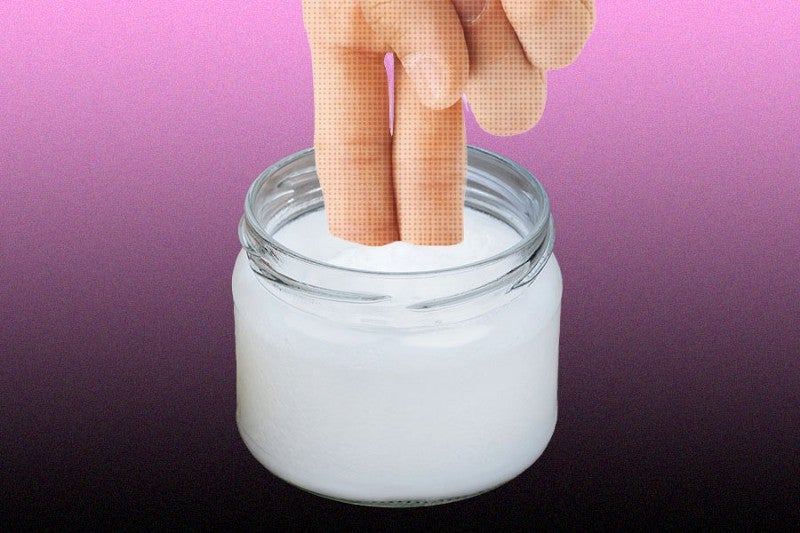According to a recent report, the lube business is sliding toward becoming a $25 billion industry by the year 2025. “Industry growth is being driven by a number of factors, including more open conversations about sex, the increasing popularity of sex toys and adult goods and the ease of shopping for these items online,” writes Lynn Comella for Forbes.
All of which is good news for you, purveyor of slippery experiences and all things smooth and silky. Still, no matter how much lube you keep in your emergency lube stash (assuming you have one), there will come a day when you’ll have run out and need to figure out some other way to oil up your knob that’s both safe for your dick, her vagina, his/her/your ass and not deleterious to latex (if you’re using a rubber glove).
So what’s the best in-a-pinch lubricant?
According to clinical sexologist and certified sex coach Sunny Rodgers, the answer is cornstarch and a bit of water. “Even though it can be a little bit messy, the texture is silky smooth and cornstarch is naturally hypoallergenic,” says Rodgers. “I recommend mixing one cup filtered water with four teaspoons of cornstarch for your own DIY water-based lube. This easy recipe is condom compatible as well.”
Wow. So, uh, I’m an average guy who lives alone and, well, corn starch is… wait, what is cornstarch for again?
We’re getting a bit off topic here, but that’s okay. As per a Spruce Eats article, cornstarch is often used as a thickening agent for sauces, gravies, glazes, soups, casseroles, pies, and now, your dick. “Cornstarch can be mixed into cool or room temperature liquids and then heated to cause a thickening action,” reports Spruce Eats. It’s also relatively flavorless compared to flour and provides roughly two times the thickening power. In other words, get yourself some cornstarch and give yourself a… I dunno, just try it out.
What about oil? I’ve got olive oil, can I use that?
Rodgers tells me that avocado oil, almond oil and olive oil can all be used as lubricants. “But keep in mind oils can degrade condom materials and make them more susceptible to breakage,” says Rodgers. Another great lube option that can be found in most kitchens, according to Rodgers, is coconut oil. “While this oil can break down condom material — so I don’t recommend using it when you’re gloved up — it’s a wonderful natural lubricant that has enormous moisturizing benefits and works well with all skin types,” she says. “It’s also long-lasting, so there isn’t a need to reapply very often.” Rodgers does warn that coconut oil can disrupt the pH level inside vaginas. “If your partner is prone to yeast infections, this isn’t an ideal choice.”
What about pH levels in the what now?
The pH levels inside a vagina plays an important role in determining its heath. “A normal vaginal pH level is between 3.8 and 4.5, which is moderately acidic,” reports Healthline. “However, what constitutes a ‘normal’ pH level can vary slightly based on your stage of life.” With regard to coconut oil, according to a different Healthline article, while it isn’t harmful to have an unbalanced pH now and then, it can increase your risk of infection.
I see. Now that we’ve established that coconut oil is silky smooth but could cause your partner to contract a vaginal yeast infection, what’s another DIY lubricant that I could cook up in my kitchen?
“A great DIY lubricant that’s a natural healer is homemade flaxseed lube,” says Rodgers. “Flaxseed contains essential fatty acids that help with skin inflammation and can be used to treat dry, flaky skin.” To make your own flaxseed lubricant, Rodgers says to try boiling a cup of whole flaxseed in three cups of filtered water for approximately ten minutes, or until the flaxseeds are soft. “Drain the water and discard the flaxseeds,” she says. “Please allow to cool prior to use.”
The best part: This natural lubricant can be stored in your refrigerator and used for up to two weeks, says Rodgers. Essentially, it’s the lube equivalent of your grandmother’s casserole. Hot!

